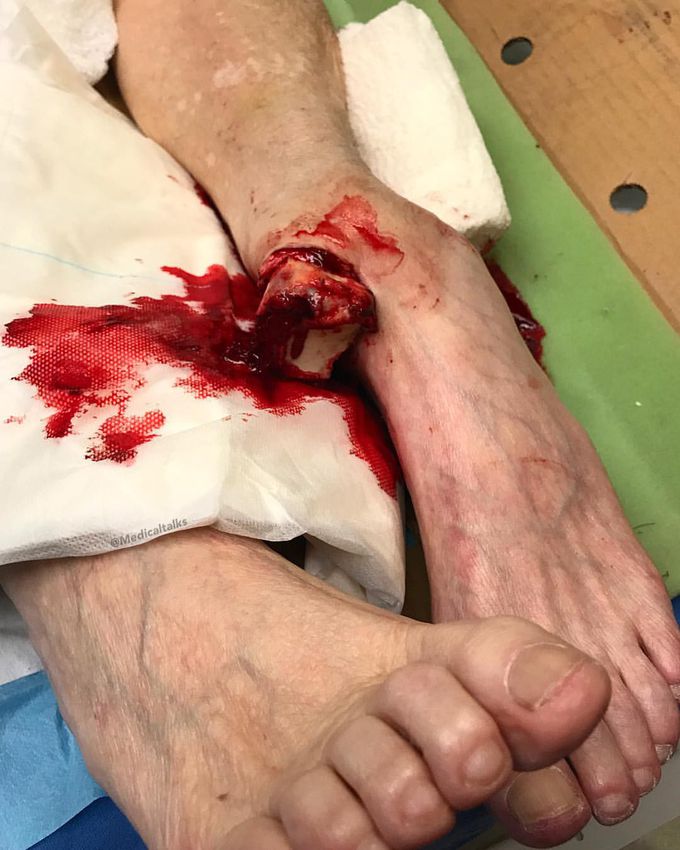


Compound open dislocation of ankle!!
This elderly patient stepped awkwardly off of a 2 foot rock wall resulting in this compound dislocation. When she arrived at the Emergency Department she was fully awake and friendly and talkative. She was unable to move her toes at the time and pulses were faint in the foot. After X-rays were done the ER physician was able to manipulate the foot back into place. Surprisingly, aside from the graphic skin tear and bone protrusion, there were no other breaks and all major tendons, ligaments, veins/arteries were not compromised. Due to the bone being exposed to dirt and debris she was started on antibiotics and still visited the operating room for a washout, further inspection of injury and stabilization. The treatment consisted of wound irrigation, debridement, reduction, and suture of the skin, followed by immobilization with a short leg cast. The ankle was immobilized in a neutral position for 8 weeks, and weight bearing was restricted for the first 6 weeks. Open ankle dislocation without an associated fracture is an extremely rare injury due to the strength of the collateral ligaments and the capsular reinforcements of the mortise capsule. They are often open because of the thin layer of tissue that lies over the malleoli. During a traumatic event, forces are placed on the ankle that cause the bones to fracture or the ligaments to tear, resulting in the dislocation injury. The ankle is an inherently stable joint and the direction of the dislocation depends upon the position of the foot and where the force arises. Most commonly, a dislocated ankle is associated with fractures of the distal ends of the tibia and fibula (called the malleolus) in association with damage to the ligaments that help support the ankle joint. Photo: @kevinabdon
How to manage this patient from the incident place until he can recharge...??
You can also stabilize/splint the injury to prevent movement of the ankle, and further injury. Also treat patient for pain to reduce her distress. And of course, first, examine and monitor for any other injuries, vital signs, etc
Hemodynamic stimuli&nonhemodynamic stimuliEffects of sugar on teeth

